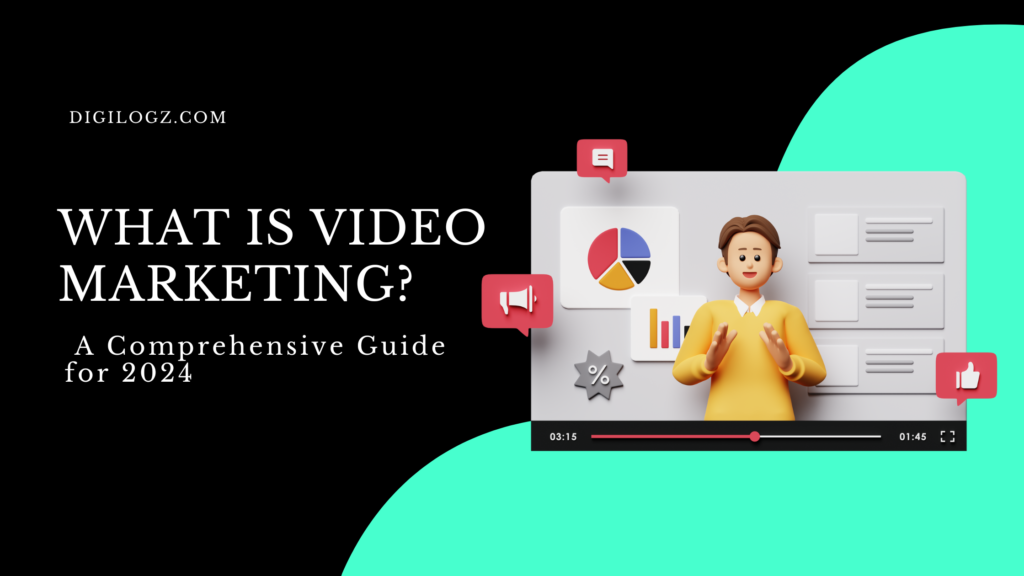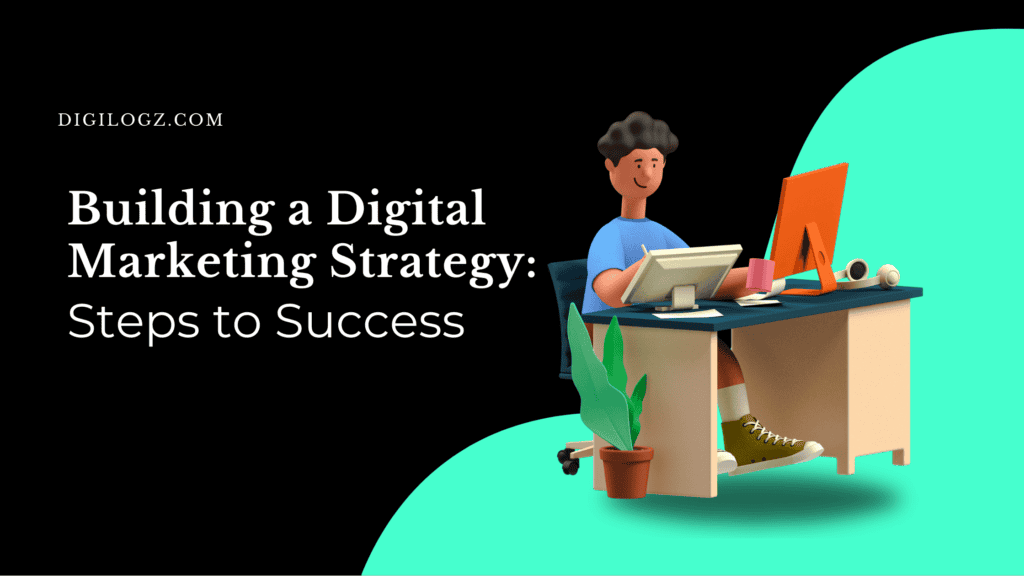What is Video Marketing? A Comprehensive Guide for 2024
Meta Description: Discover what video marketing is and how it can transform your business. Learn the benefits, strategies, and best practices for creating engaging video content that drives results. Perfect for marketers looking to leverage the power of video in their digital marketing efforts.
Introduction
Video marketing has risen to prominence as a vital component of modern digital marketing strategies. Its importance is underscored by the significant impact video content has on consumer behavior. Videos engage audiences more effectively, leading to higher retention rates and stronger brand connections. This comprehensive guide will delve into the essentials of video marketing, its benefits, and how to create and promote video content to drive success in 2024.
What is Video Marketing?
Video marketing involves using videos to promote and market products or services, increase engagement on digital and social channels, educate consumers, and reach new audiences. Core components of video marketing include the creation, editing, and distribution of video content across various platforms.
Types of Video Marketing Content:
- Promotional Videos: Highlight products or services, showcasing their features and benefits.
- Tutorials: Provide step-by-step instructions on how to use a product or service.
- Testimonials: Feature satisfied customers sharing their positive experiences.
- Explainer Videos: Simplify complex concepts or processes.
- Live Videos: Offer real-time engagement and interaction with the audience.
Benefits of Video Marketing
Table 1: Benefits of Video Marketing
| Benefit | Description | Impact on Business |
|---|---|---|
| Increased Engagement and Retention | Videos capture attention more effectively than text or images. Viewers retain 95% of a message when watched in a video compared to 10% when reading text. | Higher audience engagement and message recall |
| Higher Conversion Rates | Adding a video to a landing page can increase conversions by 80%. 64% of consumers are more likely to buy a product after watching a video about it. | Boosts sales and lead generation |
| Improved SEO and Website Traffic | Videos can boost a site’s SEO, making it more likely to appear in search results. Websites with video content are 53 times more likely to rank on the first page of Google. | Enhances online visibility and website traffic |
| Building Brand Awareness and Trust | Videos humanize a brand, fostering a deeper connection with the audience. Authentic and high-quality videos can build trust and credibility with consumers. | Strengthens brand identity and customer loyalty |
Video marketing offers numerous advantages that can significantly enhance a brand’s online presence and effectiveness.
Increased Engagement and Retention:
- Videos capture attention more effectively than text or images.
- Viewers retain 95% of a message when watched in a video compared to 10% when reading text.
Higher Conversion Rates:
- Adding a video to a landing page can increase conversions by 80%.
- 64% of consumers are more likely to buy a product after watching a video about it.
Improved SEO and Website Traffic:
- Videos can boost a site’s SEO, making it more likely to appear in search results.
- Websites with video content are 53 times more likely to rank on the first page of Google.
Building Brand Awareness and Trust:
- Videos humanize a brand, fostering a deeper connection with the audience.
- Authentic and high-quality videos can build trust and credibility with consumers.
Table 2: Types of Video Marketing Content
| Type of Video | Description | Example Uses |
|---|---|---|
| Promotional Videos | Highlight products or services, showcasing their features and benefits. | Product launches, brand awareness |
| Tutorials | Provide step-by-step instructions on how to use a product or service. | How-to guides, product demonstrations |
| Testimonials | Feature satisfied customers sharing their positive experiences. | Building trust, social proof |
| Explainer Videos | Simplify complex concepts or processes. | Product introductions, service explanations |
| Live Videos | Offer real-time engagement and interaction with the audience. | Q&A sessions, live events, product demos |
Developing a Video Marketing Strategy
Creating an effective video marketing strategy requires careful planning and a clear understanding of your goals and audience.
Setting Clear Objectives and Goals:
- Define what you want to achieve with your video marketing (e.g., brand awareness, lead generation, sales).
Identifying Target Audience and Their Preferences:
- Understand who your audience is and what type of content they prefer.
Choosing the Right Type of Video Content:
- Select the video formats that align with your objectives and resonate with your audience.
Planning and Scripting Your Videos:
- Develop a detailed plan and script for your videos to ensure they deliver your message effectively.
Creating Effective Video Content
Producing high-quality video content is essential for engaging your audience and achieving your marketing goals.
Tips for High-Quality Video Production:
- Invest in good equipment and software for shooting and editing videos.
- Ensure proper lighting and clear audio for professional-looking videos.
Importance of Storytelling and Compelling Visuals:
- Craft a compelling narrative that captures attention and drives engagement.
- Use high-quality visuals to enhance the storytelling experience.
Using Captions and Subtitles for Accessibility:
- Include captions and subtitles to make your videos accessible to a wider audience.
Optimizing Video Length and Format:
- Keep videos concise and to the point, typically under two minutes for maximum impact.
- Choose the right format (horizontal, vertical, square) based on the platform and audience preferences.
Video Marketing Platforms
Table 3: Video Marketing Platforms and Best Practices
| Platform | Best For | Best Practices |
|---|---|---|
| YouTube | Long-form content, tutorials | Optimize titles and descriptions with relevant keywords, create custom thumbnails, engage with comments. |
| Short, engaging videos | Use captions for autoplay videos, keep videos short and engaging, leverage Facebook Ads for broader reach. | |
| Visually appealing content, short videos (Reels, Stories) | Use Instagram Stories and Reels for quick engagement, incorporate trending hashtags, post regularly. | |
| TikTok | Creative, short-form videos | Participate in trends, use popular music, keep videos entertaining and concise, leverage TikTok Ads. |
| Professional and educational content | Share industry insights, keep videos professional, use native video uploads for better visibility. |
Understanding the strengths and best practices for different video marketing platforms is crucial for maximizing reach and engagement.
Overview of Popular Platforms:
- YouTube: The largest video-sharing platform, ideal for long-form content and tutorials.
- Facebook: Great for short, engaging videos that encourage social sharing.
- Instagram: Perfect for visually appealing content and short videos (Reels, Stories).
- TikTok: Popular for creative, short-form videos that go viral quickly.
- LinkedIn: Best for professional and educational video content.
Best Practices for Each Platform:
- Customize your content to fit the platform’s format and audience preferences.
- Engage with your audience by responding to comments and encouraging interaction.
Leveraging Platform-Specific Features and Algorithms:
- Utilize features like YouTube SEO, Instagram hashtags, TikTok trends, and LinkedIn networking to enhance visibility and engagement.
Promoting Your Video Content
Effectively promoting your video content ensures it reaches the intended audience and drives desired actions.
SEO Techniques for Video Content:
- Optimize titles, descriptions, and tags with relevant keywords.
- Create eye-catching thumbnails to increase click-through rates.
Sharing on Social Media and Email Marketing:
- Share videos across your social media channels to maximize reach.
- Include videos in email marketing campaigns to boost engagement and click-through rates.
Collaborating with Influencers and Partners:
- Partner with influencers to leverage their audience and credibility.
- Collaborate with other brands for co-branded video content.
Using Paid Advertising to Boost Reach:
- Invest in paid ads on platforms like YouTube, Facebook, and Instagram to expand your video’s reach.
Measuring Video Marketing Success
Tracking and analyzing the performance of your video marketing efforts is essential for continuous improvement.
Key Metrics to Track:
- Views: Number of times your video is watched.
- Engagement: Likes, shares, comments, and interaction rates.
- Conversion Rates: Number of viewers who take a desired action after watching.
Tools for Video Analytics:
- Google Analytics: Track video performance on your website.
- Platform-Specific Insights: Use analytics tools provided by platforms like YouTube, Facebook, and Instagram.
Analyzing Data to Refine and Improve Strategy:
- Regularly review analytics data to identify what’s working and what’s not.
- Adjust your strategy based on insights to enhance future video marketing efforts.
Case Studies and Examples
Learning from successful video marketing campaigns can provide valuable insights and inspiration.
Successful Video Marketing Campaigns
Dollar Shave Club
Dollar Shave Club’s viral video “Our Blades Are F***ing Great” is a textbook example of successful video marketing. The video featured the company’s CEO delivering a humorous and straightforward pitch about their razor subscription service. This video amassed millions of views in a short time, leading to a significant increase in subscriptions and brand recognition.
- Key Strategies:
- Humor and Relatability: The video used humor to connect with viewers, making the brand memorable.
- Clear Value Proposition: It clearly communicated the benefits of the service.
- Strong Call to Action: Encouraged viewers to visit the website and subscribe.
Airbnb
Airbnb’s “Made Possible by Hosts” campaign highlighted real stories of hosts and guests, showcasing the personal connections and unique experiences facilitated by the platform. The campaign used both short clips and longer videos to engage different audience segments.
- Key Strategies:
- Storytelling: Focused on authentic, emotional stories that resonate with viewers.
- User-Generated Content: Leveraged real-life experiences to build credibility and trust.
- Cross-Platform Promotion: Shared videos across multiple platforms to maximize reach.
GoPro
GoPro’s user-generated content campaigns have been instrumental in showcasing the versatility of their cameras. By encouraging customers to share their own GoPro footage, the company has built a vast library of engaging and authentic video content.
- Key Strategies:
- User-Generated Content: Tapped into the creativity of its users to generate content.
- Community Building: Fostered a sense of community and brand loyalty.
- Highlighting Product Benefits: Showcased the camera’s capabilities through real-world use cases.
Old Spice
Old Spice’s “The Man Your Man Could Smell Like” campaign featured a series of humorous and surreal videos that quickly went viral. The campaign revitalized the brand and significantly increased sales.
- Key Strategies:
- Humor and Creativity: Used unexpected and humorous elements to capture attention.
- Memorable Character: Created a memorable spokesperson that became synonymous with the brand.
- Interactive Elements: Engaged with the audience through responses and follow-up videos.
Lessons Learned and Best Practices from Industry Leaders
Emphasize Storytelling
Successful video marketing campaigns often revolve around compelling stories that connect with viewers on an emotional level. Whether it’s through humor, inspiration, or real-life experiences, storytelling can make your content more relatable and memorable.
Leverage User-Generated Content
Encouraging your audience to create and share their own content can significantly boost engagement and authenticity. User-generated content not only showcases your product in real-world scenarios but also builds a sense of community around your brand.
Optimize for Each Platform
Different platforms have unique features and audience behaviors. Tailoring your content to fit each platform’s strengths can enhance its effectiveness. For instance, short, engaging clips work well on Instagram and TikTok, while longer, in-depth videos are better suited for YouTube.
Engage with Your Audience
Interacting with your audience by responding to comments, creating follow-up content, and involving them in the creative process can build stronger connections and increase loyalty. Engagement should be a two-way street, where you actively listen to and communicate with your viewers.
Use High-Quality Production Values
While content quality is paramount, production quality also plays a significant role in viewer perception. Invest in good equipment and software to ensure your videos are visually appealing and professional. However, authentic and raw footage can sometimes resonate more than highly polished content, depending on your audience and message.
Incorporate Strong Calls to Action
Clearly defined calls to action can guide viewers on the next steps you want them to take, whether it’s visiting your website, subscribing to your channel, or making a purchase. Effective CTAs can significantly improve conversion rates.
Track and Analyze Performance
Regularly monitoring your video’s performance through analytics tools helps you understand what works and what doesn’t. Key metrics such as views, engagement, and conversion rates provide insights that can inform and refine your future video marketing strategies.
Conclusion
Video marketing is an indispensable tool for modern marketers, offering numerous benefits and opportunities to engage audiences and drive results. By understanding the fundamentals, developing a robust strategy, and continuously refining your approach, you can harness the power of video marketing to elevate your brand in 2024 and beyond. Start implementing video marketing strategies today to reap the rewards and stay ahead of the competition.
FAQs
What are some effective video marketing strategies?
Effective strategies include setting clear goals, understanding your audience, creating high-quality content, and promoting videos across multiple platforms.
What are the benefits of video marketing?
Benefits include increased engagement, higher conversion rates, improved SEO, and enhanced brand awareness and trust.
How do I create engaging video content?
Focus on storytelling, use high-quality visuals, keep videos concise, and optimize for the platform you’re using.
Which platforms are best for video marketing?
Popular platforms include YouTube, Facebook, Instagram, TikTok, and LinkedIn, each offering unique features and audience engagement opportunities.
How can I measure the success of my video marketing efforts?
Track key metrics like views, engagement, and conversion rates using tools like Google Analytics and platform-specific insights.



